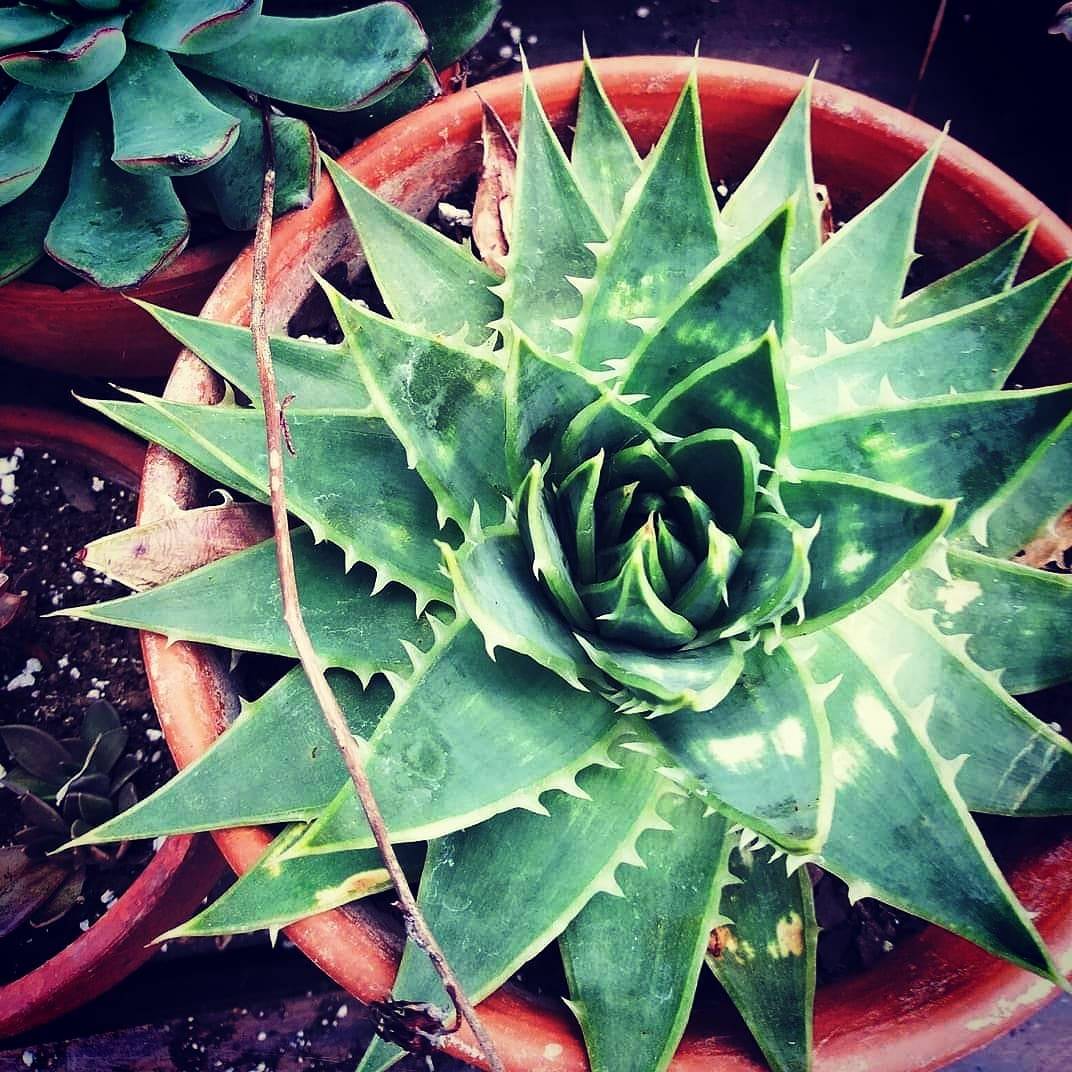Succulents

A succulent, by definition, is a plant with parts that are thickened, fleshy, and engorged. These parts usually retain water in arid climates or soil conditions. The term “succulent” comes from the Latin word sucus, meaning juice or sap. Cacti are a form of succulent that stores water in the stem and has very small or no leaves. There are succulent plants in more than 60 families, with many cultivated as ornamentals and houseplants.
Succulents became very popular over the last few years because of their bright colors and supposedly easy-to-care-for nature. My favorite succulents include the jade plant, desert rose, aloes, echeveria, kalanchoe, and euphorbia. Succulents have some cool features that set them apart from other plants and allow them to survive the hot and dry climates where they usually live. Unlike most plants, succulents open their stomata at night to reduce the moisture they lose. As a result, they have a modified form of carbon dioxide fixation and photosynthesis, which occurs at night rather than during the day, like most plants.
The second remarkable feature is those modified plant parts that help hold water during drought. Many succulents hold water through their thick, fleshy leaves, while others, like the desert rose, hold extra water in the thickened stem at the base of the plant.
Succulents are relatively easy to care for. Most prefer bright light indoors (with a few exceptions, such as snake plant). Otherwise, they can get leggy. Outdoors, most can be acclimated to full sun. They prefer to stay on the dry side, and it is very easy to overlove them and kill them by overwatering. The best time to water is when the leaves are starting to get slightly soft, which means the plant is pulling extra water from the leaves to supplement. Another way to check if they need to be watered is to stick a wooden kabob stuck down to the bottom of the pot, then let it sit in the soil for 10 minutes and pull it out. If the stick is completely dry, the plant probably needs some water; if not, wait a few more days and check again. There are many succulents that are hardy outdoors in Kansas, such as sedums, cacti, and hens and chicks, but most will need to be brought indoors in the wintertime.

Have questions? Contact our office where our Horticulture Extension Agent will assist you with questions.
Phone: (316) 321-9660
Email: callae@ksu.edu